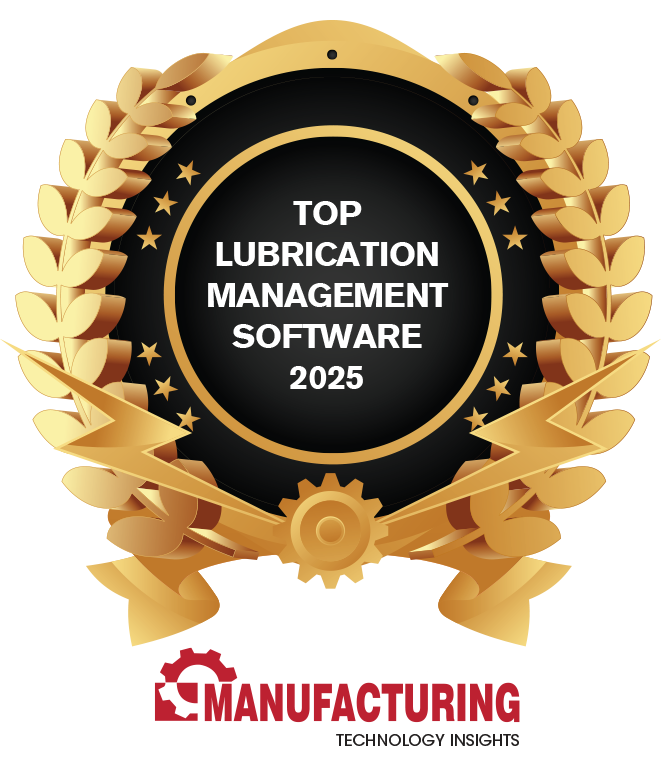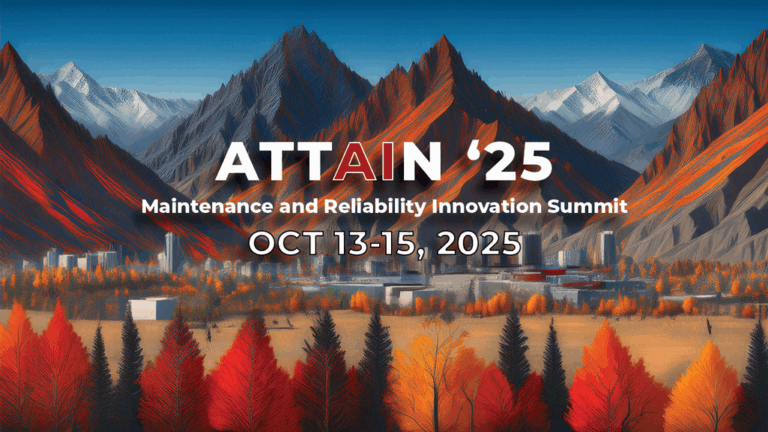Advances in technology and increasing demands are revolutionizing the field of maintenance and asset management. What started as a reactive fix-it-when-it-breaks type of process is becoming more proactive and data-driven thanks to new emerging technologies. The future of maintenance is geared towards strategies that not only improve reliability but also enhance sustainability by reducing energy consumption and waste. In addition, the maintenance workforce is also shifting, with increasing demand for skilled technicians proficient in digital tools and advanced technologies.
We predict that several key trends will define the industrial maintenance landscape in the future. Read on to learn how these trends are shaping or are predicted to transform the way industries manage their assets, improve reliability, and stay competitive in these demanding times.
Industrial Maintenance: A History
But before we dive into the future, let’s take a brief look at the past. Maintenance, in definition, refers to the practices and processes involved in keeping machinery, equipment, and facilities in optimal working condition within an industrial setting. The evolution of maintenance was concurrent with the evolution of industrial processes and systems:
Early Industrial Era (1700-1800s)
Early industries like factories and mills used simple machines, and thus, maintenance was primarily reactive. When equipment failures occurred, factory owners or operators would call skilled craftsmen like machinists or blacksmiths to make repairs. Any downtime encountered was accepted as a natural part of production.
Complex Industries Era (Early 1900s)
Complex industries like steel, automotive, and mass manufacturing grew, and with them came complex machinery and equipment. Machine failure and the resulting downtime resulted in significant economic impacts. This gave rise to strategies like Preventive Maintenance (PM) that focus on regularly scheduled maintenance tasks to prevent breakdowns. It was during this period that organizations started having a dedicated department for maintenance work.
Post-War Industries Era (1950-70s)
Industries like aerospace, manufacturing, and power generation experienced a massive boom after World War II. In these industries, equipment reliability became the focus, giving rise to Reliability-Centered Maintenance (RCM). RCM is a strategy where understanding failure modes and designing maintenance strategies are critical to maximizing equipment uptime.
Lean Manufacturing Era (1970-80s)
In this period, lean manufacturing became popular as a method to minimize waste while maximizing productivity. Along with this approach, the Total Productive Maintenance (TPM) strategy was developed. TPM aimed to improve equipment effectiveness through the holistic involvement of all employees, not just the maintenance team.
Sensors and Computers Era (1990-2010s)
Technological advances, including the development of sensors and analytical software in computers, enabled Predictive Maintenance (PdM). PdM is a maintenance strategy that allows the real-time monitoring of equipment conditions, predicting failures based on data instead of relying on fixed schedules.
Industry 4.0 Era (2010s-Present)
Industry 4.0, also called the Fourth Industrial Revolution, is the period characterized by the integration of intelligent digital technologies into the industrial process. In this era, maintenance is enabled with data-driven, autonomous, and predictive systems. Complex assets also rely on CMMS (Computerized Maintenance Management Systems) and digital twins (virtual replicas of processes or systems) to streamline and optimize maintenance processes.
The Future of Maintenance Management
Now that you’re up to speed with the evolution of industrial maintenance, let’s ask, what’s in store for the future?
Maintenance will continue to evolve, with automation, remote monitoring, and AI playing key roles in driving these transformations. Here are the major trends and predictions set to shape the future of industrial maintenance:
1. Predictive Maintenance will take center stage.
Technologies such as Internet of Things (IoT) sensors and machine learning algorithms will improve the predictive benefits of real-time equipment data gathering. Thus, PdM will dominate the landscape, allowing organizations to perform maintenance only when necessary and minimize unnecessary repairs while extending equipment life.
2. Artificial intelligence (AI) and machine learning will become more useful than ever.
Maintenance scheduling and task management will benefit from AI and machine learning to automate and streamline procedures. These technologies will also be indispensable in analyzing data for decision-making and root causes of failures. Without these AI-driven technologies, vast amounts of equipment and data will not be processed as quickly and accurately.
3. Augmented Reality (AR) will improve technical training and support.
AR is a technology that modifies the perception of the real world through computer-generated information. The use of AR to visualize complex systems will increase, benefiting technicians during training and as a reference during repairs and inspections. AR will also enable real-time guidance and access to remote experts, which will be crucial for technicians in accomplishing their tasks.
Ultimately, the use of AR will improve the accuracy and speed of maintenance, especially for new or less experienced technicians, while also reducing downtime.
4. CMMS and EAM (Enterprise Asset Management) will become more comprehensive.
Management systems like CMMS and EAM will continue to evolve in the fast-paced digital era. There will be a large demand for comprehensive platforms that can integrate seamlessly with AI, IoT, and other emerging technologies. These platforms will move beyond simple maintenance scheduling to become data centers for holistic asset management.
5. Maintenance will play a crucial role in sustainability and energy efficiency.
Sustainability and environmental impact will continue to move up the priority list of any reputable organization. With that, maintenance practices will focus more on sustainability. Maintenance strategies will incorporate practices that reduce energy consumption, minimize environmental waste, and extend asset life. These green maintenance practices will not only help meet environmental goals but also reduce operational costs through better energy management.
6. Maintenance tasks will become safer.
With the increase in AI use, remote and autonomous maintenance becomes more valuable. Robots and drones may take the place of workers in performing tasks in hazardous and hard-to-reach environments. Not only will the efficiency and accuracy of these tasks improve, but the risk to human health and wellness will also be reduced.
7. Cybersecurity will be integrated into maintenance.
As more equipment is being connected through the cloud and IoT, maintenance must integrate cybersecurity into its system. This is to safeguard the vulnerabilities in the maintenance operations that, if exposed to cyberattacks, can affect the entire operation. Integrating cybersecurity protocols into the maintenance system will protect critical infrastructure and data from these attacks.
8. Decision-making will be data-driven and more proactive.
Modern hardware and software will make data collection and storage more accurate and efficient. Advanced analytics will provide critical insights for proactive decision-making. With these, maintenance strategies will become more proactive. Organizations will no longer just respond to failures; they can watch out for them, predict their likely occurrence, and perform the necessary actions to prevent them. All these ultimately result in optimizing the performance of machinery and assets while minimizing overall costs.
9. Workforce skills will transform, and maintenance roles shift.
The increased use of digital technologies will demand a workforce skilled in operating and managing these advanced systems. Maintenance roles will shift from manual and hands-on to analytical and tech-driven. As such, maintenance training programs will be critical in providing technicians with the skills to work alongside said technologies and address the gap between retiring experts and new talent entering the field.
Take on the Future of Maintenance Management with Redlist
As the industrial landscape continues to evolve, more technologies and strategies will emerge. Being flexible, i.e., embracing new technologies or adopting revolutionary strategies, is key to staying competitive. You must keep up with trends and innovations that can improve how you manage your assets, improve operational efficiency, reduce unplanned downtime, extend equipment life, increase cost savings, and enhance reliability.
However, managing these technological advancements can be challenging without the right support. You can find this support from a powerful solution like Redlist’s CMMS. Use this cloud-based platform to centralize maintenance tasks, integrate IoT data, and streamline workflows for predictive and preventive maintenance.
Redlist’s powerful features include real-time asset monitoring, automated work orders, and advanced reporting. Thus, Redlist empowers teams to proactively manage maintenance strategies, reduce downtime, and ensure long-term asset reliability. On top of all these, Redlist is customizable, allowing you the flexibility to modify and adjust your system, helping you adapt to whatever changes the future may hold.A robust CMMS like Redlist will be invaluable as you take on the future. Consult with our experts to book a CMMS demo today!


